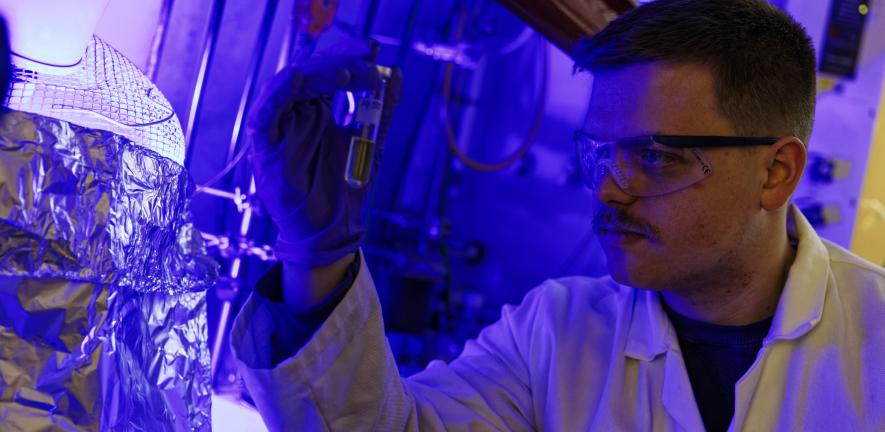
“New reactions which create potential drug candidates that only work in small quantities are often held back from stage two of development because their utility is limited due to their scale. Sometimes scaling up takes years,” says Oliver, a final year PhD student in the Ley lab.
When Oliver joined the Ley lab in 2020, he began exploring reactions to produce spirocycles, which are increasingly used in medicinal chemistry. Oliver describes spirocycles as being like “three-dimensional paper chains which contain big pockets to fill with chemicals.” This chemical space gives synthetic chemists a whole new library of possibilities for drug design.
Oliver’s innovation was to synthesise spirocycles all in one ‘pot’. His reaction requires fewer steps, and uses simpler and cheaper starting materials. “Some syntheses require chemical reactions to take place in different beakers and flasks in multiple stages. This reaction can be done easily in the lab because the quantities we use are light enough to pick up, but in industry it is more complicated because the products weigh more. What is much easier and safer on a tonne scale is to add everything into one vessel from the start.”
A lightbulb moment
.jpg)
Ollie Griffiths in the lab, taken by Nathan Pitt ©University of Cambridge.
Oliver uses photosynthesis for the reactions, which involves the use of light generated by LEDs to kickstart the photochemistry. One of the obstacles Oliver encountered to scaling up was how to deliver light effectively to larger quantities of liquid. He compares the problem to how the ocean becomes darker the deeper you go, because the sun cannot penetrate the liquid. “The process becomes more challenging as the beaker becomes larger,” he says.
Shining light through an industrial tank is not practical so Oliver’s solution was to adopt a continuous flow platform, in which the liquid runs through a narrow tube that flows past the light. His current setup uses a tube no wider than a phone charging cable, but he says this sort of setup can be scaled up in industry with larger tubes and more powerful lights. Using this proof of concept, he created ten grams of product in three hours.
“This is the result that I am the most proud of. Those ten grams might not seem like much, it’s how much coffee you might use for one cup, but the proof of concept started at 50 milligrams. That’s orders of magnitude smaller than a pinch of salt. Even better is that the reaction is robust, reliable and automated so while it was brewing I could actually go and get a cup of coffee if I wanted.”

